William N. Havard
Catplayinginthesnow: Impact of Prior Segmentation on a Model of Visually Grounded Speech
Jun 15, 2020

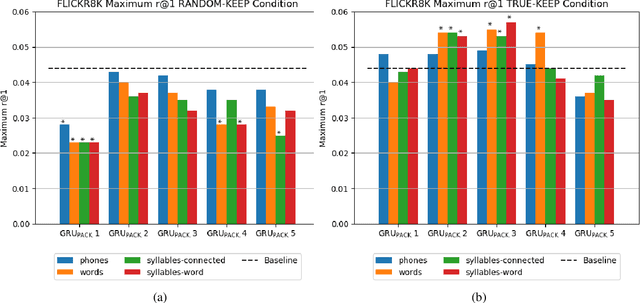

Abstract:We investigate the effect of introducing phone, syllable, or word boundaries on the performance of a Model of Visually Grounded Speech and compare the results with a model that does not use any boundary information and with a model that uses random boundaries. We introduce a simple way to introduce such information in an RNN-based model and investigate which type of boundary enables a better mapping between an image and its spoken description. We also explore where, that is, at which level of the network's architecture such information should be introduced. We show that using a segmentation that results in syllable-like or word-like segments and that respects word boundaries are the most efficient. Also, we show that a linguistically informed subsampling is more efficient than a random subsampling. Finally, we show that using a hierarchical segmentation, by first using a phone segmentation and recomposing words from the phone units yields better results than either using a phone or word segmentation in isolation.
Word Recognition, Competition, and Activation in a Model of Visually Grounded Speech
Sep 18, 2019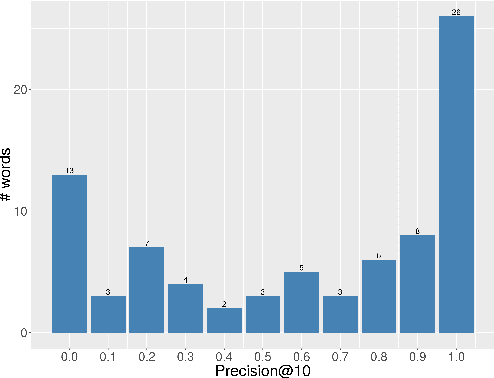
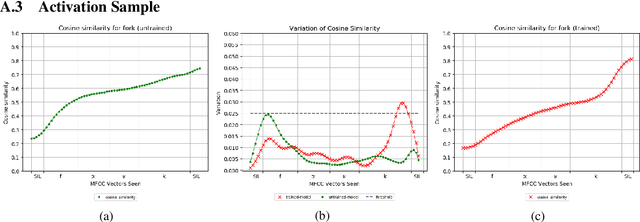

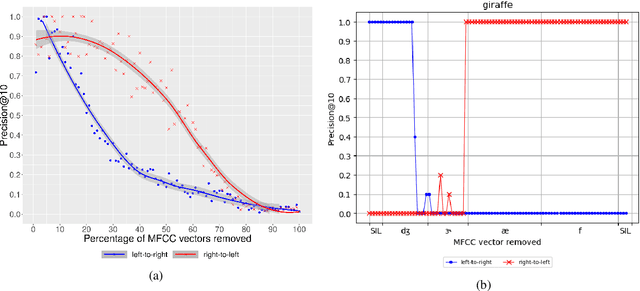
Abstract:In this paper, we study how word-like units are represented and activated in a recurrent neural model of visually grounded speech. The model used in our experiments is trained to project an image and its spoken description in a common representation space. We show that a recurrent model trained on spoken sentences implicitly segments its input into word-like units and reliably maps them to their correct visual referents. We introduce a methodology originating from linguistics to analyse the representation learned by neural networks -- the gating paradigm -- and show that the correct representation of a word is only activated if the network has access to first phoneme of the target word, suggesting that the network does not rely on a global acoustic pattern. Furthermore, we find out that not all speech frames (MFCC vectors in our case) play an equal role in the final encoded representation of a given word, but that some frames have a crucial effect on it. Finally, we suggest that word representation could be activated through a process of lexical competition.
MaSS: A Large and Clean Multilingual Corpus of Sentence-aligned Spoken Utterances Extracted from the Bible
Aug 01, 2019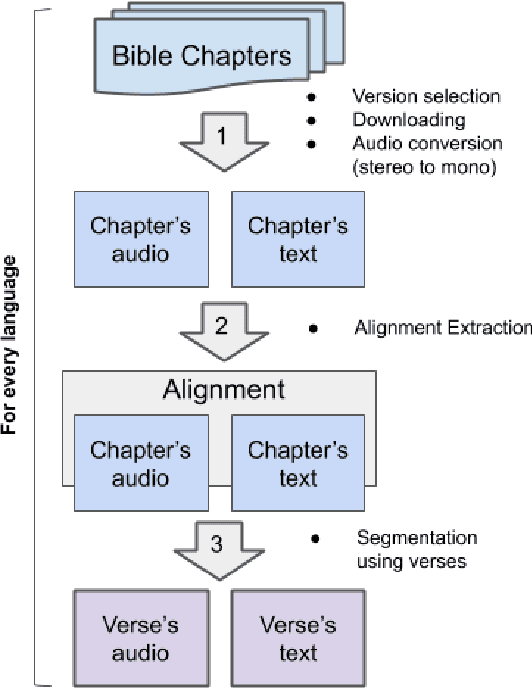

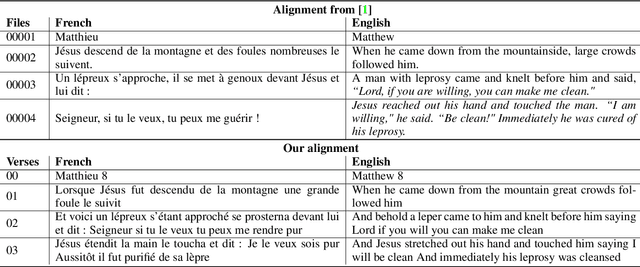
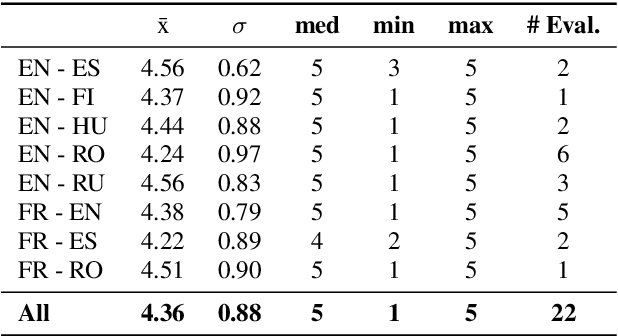
Abstract:The CMU Wilderness Multilingual Speech Dataset is a newly published multilingual speech dataset based on recorded readings of the New Testament. It provides data to build Automatic Speech Recognition (ASR) and Text-to-Speech (TTS) models for potentially 700 languages. However, the fact that the source content (the Bible), is the same for all the languages is not exploited to date. Therefore, this article proposes to add multilingual links between speech segments in different languages, and shares a large and clean dataset of 8,130 para-lel spoken utterances across 8 languages (56 language pairs).We name this corpus MaSS (Multilingual corpus of Sentence-aligned Spoken utterances). The covered languages (Basque, English, Finnish, French, Hungarian, Romanian, Russian and Spanish) allow researches on speech-to-speech alignment as well as on translation for syntactically divergent language pairs. The quality of the final corpus is attested by human evaluation performed on a corpus subset (100 utterances, 8 language pairs). Lastly, we showcase the usefulness of the final product on a bilingual speech retrieval task.
Models of Visually Grounded Speech Signal Pay Attention To Nouns: a Bilingual Experiment on English and Japanese
Feb 08, 2019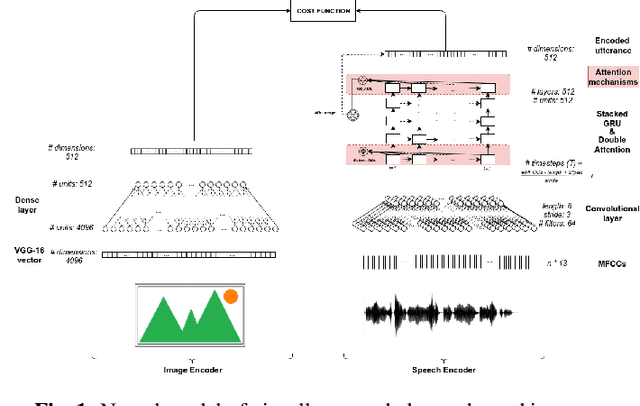


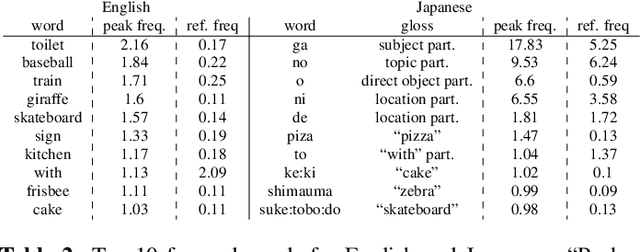
Abstract:We investigate the behaviour of attention in neural models of visually grounded speech trained on two languages: English and Japanese. Experimental results show that attention focuses on nouns and this behaviour holds true for two very typologically different languages. We also draw parallels between artificial neural attention and human attention and show that neural attention focuses on word endings as it has been theorised for human attention. Finally, we investigate how two visually grounded monolingual models can be used to perform cross-lingual speech-to-speech retrieval. For both languages, the enriched bilingual (speech-image) corpora with part-of-speech tags and forced alignments are distributed to the community for reproducible research.
 Add to Chrome
Add to Chrome Add to Firefox
Add to Firefox Add to Edge
Add to Edge